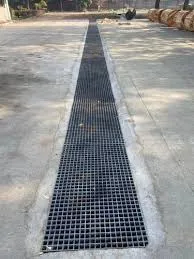
-
 Afrikaans
Afrikaans -
 Albanian
Albanian -
 Amharic
Amharic -
 Arabic
Arabic -
 Armenian
Armenian -
 Azerbaijani
Azerbaijani -
 Basque
Basque -
 Belarusian
Belarusian -
 Bengali
Bengali -
 Bosnian
Bosnian -
 Bulgarian
Bulgarian -
 Catalan
Catalan -
 Cebuano
Cebuano -
 China
China -
 China (Taiwan)
China (Taiwan) -
 Corsican
Corsican -
 Croatian
Croatian -
 Czech
Czech -
 Danish
Danish -
 Dutch
Dutch -
 English
English -
 Esperanto
Esperanto -
 Estonian
Estonian -
 Finnish
Finnish -
 French
French -
 Frisian
Frisian -
 Galician
Galician -
 Georgian
Georgian -
 German
German -
 Greek
Greek -
 Gujarati
Gujarati -
 Haitian Creole
Haitian Creole -
 hausa
hausa -
 hawaiian
hawaiian -
 Hebrew
Hebrew -
 Hindi
Hindi -
 Miao
Miao -
 Hungarian
Hungarian -
 Icelandic
Icelandic -
 igbo
igbo -
 Indonesian
Indonesian -
 irish
irish -
 Italian
Italian -
 Japanese
Japanese -
 Javanese
Javanese -
 Kannada
Kannada -
 kazakh
kazakh -
 Khmer
Khmer -
 Rwandese
Rwandese -
 Korean
Korean -
 Kurdish
Kurdish -
 Kyrgyz
Kyrgyz -
 Lao
Lao -
 Latin
Latin -
 Latvian
Latvian -
 Lithuanian
Lithuanian -
 Luxembourgish
Luxembourgish -
 Macedonian
Macedonian -
 Malgashi
Malgashi -
 Malay
Malay -
 Malayalam
Malayalam -
 Maltese
Maltese -
 Maori
Maori -
 Marathi
Marathi -
 Mongolian
Mongolian -
 Myanmar
Myanmar -
 Nepali
Nepali -
 Norwegian
Norwegian -
 Norwegian
Norwegian -
 Occitan
Occitan -
 Pashto
Pashto -
 Persian
Persian -
 Polish
Polish -
 Portuguese
Portuguese -
 Punjabi
Punjabi -
 Romanian
Romanian -
 Russian
Russian -
 Samoan
Samoan -
 Scottish Gaelic
Scottish Gaelic -
 Serbian
Serbian -
 Sesotho
Sesotho -
 Shona
Shona -
 Sindhi
Sindhi -
 Sinhala
Sinhala -
 Slovak
Slovak -
 Slovenian
Slovenian -
 Somali
Somali -
 Spanish
Spanish -
 Sundanese
Sundanese -
 Swahili
Swahili -
 Swedish
Swedish -
 Tagalog
Tagalog -
 Tajik
Tajik -
 Tamil
Tamil -
 Tatar
Tatar -
 Telugu
Telugu -
 Thai
Thai -
 Turkish
Turkish -
 Turkmen
Turkmen -
 Ukrainian
Ukrainian -
 Urdu
Urdu -
 Uighur
Uighur -
 Uzbek
Uzbek -
 Vietnamese
Vietnamese -
 Welsh
Welsh -
 Bantu
Bantu -
 Yiddish
Yiddish -
 Yoruba
Yoruba -
 Zulu
Zulu
frp rectangular tank
Understanding FRP Rectangular Tanks Applications and Benefits
FRP (Fiberglass Reinforced Plastic) rectangular tanks are becoming increasingly popular in various industries due to their excellent properties and versatility. These tanks are primarily constructed from a combination of fiberglass and a resin matrix, which provides them with a high strength-to-weight ratio, corrosion resistance, and durability. This article will explore the applications, advantages, and aspects to consider when using FRP rectangular tanks.
Applications of FRP Rectangular Tanks
FRP rectangular tanks are used in a wide range of applications, primarily due to their ability to safely store and transport liquids and chemicals. They are commonly found in industries such as water treatment, wastewater management, chemical processing, agriculture, and food production. For instance, in water treatment facilities, FRP tanks are utilized for the storage of both raw and treated water due to their resistance to corrosion, which is crucial for maintaining water quality.
In chemical processing, these tanks can withstand aggressive chemicals that would typically degrade other materials, such as steel or concrete. Moreover, FRP rectangular tanks can be tailored to specific size and capacity requirements, making them suitable for various applications, from small-scale operations to large industrial setups.
Advantages of FRP Rectangular Tanks
1. Corrosion Resistance One of the foremost advantages of FRP rectangular tanks is their exceptional resistance to corrosion. Unlike traditional materials such as steel, which can rust when exposed to moisture and chemicals, FRP tanks maintain their integrity over time, reducing the need for frequent repairs or replacements.
frp rectangular tank

2. Lightweight Construction FRP tanks are significantly lighter than their metal counterparts. This lightweight nature not only makes them easier to handle and install but also reduces the structural load on support systems, thus permitting installation in areas that might not support heavier tanks.
3. Customization FRP tanks offer a high level of customization. Manufacturers can design tanks in various shapes, sizes, and configurations to meet the specific needs of their customers, ensuring that the tanks are tailored to the application at hand.
4. Temperature Resistance FRP materials can endure a wide range of temperatures, making these tanks suitable for storing hot and cold liquids. This adaptability is particularly beneficial in industries where temperature fluctuations are common.
5. Economic Efficiency Though the initial investment in FRP tanks can be higher than some alternatives, the long-term savings associated with their durability and low maintenance needs often make them a more economical choice in the long run.
Considerations When Using FRP Rectangular Tanks
While FRP rectangular tanks offer numerous advantages, users should also consider a few critical factors. Proper installation is vital to ensure the tanks perform optimally. Additionally, it’s essential to select a reputable manufacturer to guarantee the quality of materials and workmanship. Regular inspections can further enhance the longevity of the tanks, helping to identify any potential issues before they become significant problems.
In conclusion, FRP rectangular tanks present a reliable and efficient solution for various storage needs across multiple industries. With their impressive properties and versatility, they are an excellent investment for businesses looking to enhance their operational efficiency while ensuring safety and compliance.









